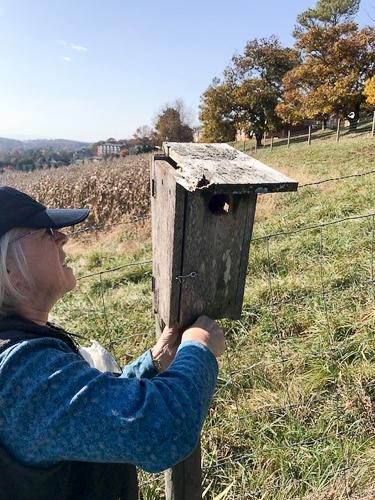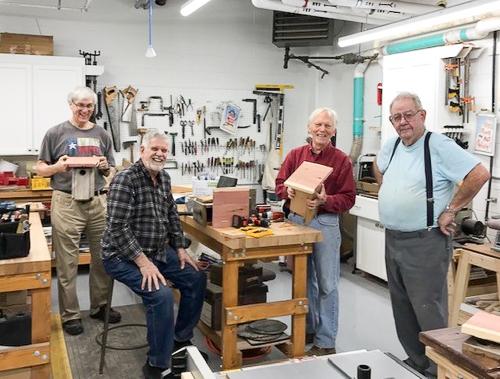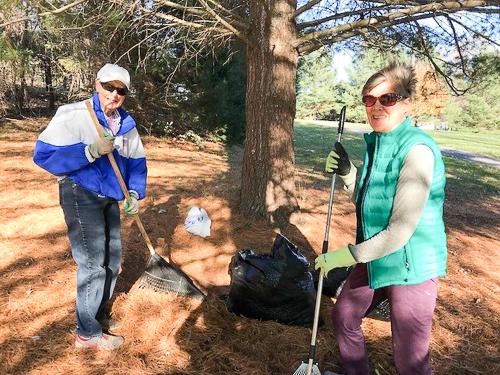The Bluebird Project at Sunnyside
We are fortunate to be surrounded by amazing natural beauty. This includes the native birds nesting at Sunnyside.
Cindy Westley removes an old weather-worn nestbox.
Loss of nesting habitat, severe weather events and negative impacts from non-native bird species brought to the US from Europe in the 1800s (English Sparrows and European Starlings) are three main reasons for decline in our native bird populations. Scientists and birds lovers grew alarmed at serious declines in bluebird numbers.
Interest in helping bluebirds grew and in 1979 the North American Bluebird Society was founded. Since then, Eastern Bluebird populations are steadily climbing, thanks to enthusiasts.
A few years ago, Andy Sale and Galen Moses used leftover wood scraps to build nestboxes. Over 70 of them were put up throughout the grounds, with some located along trails and some in residents’ yards. Residents were invited to “Sponsor a Birdhouse”. A population of bluebirds has been established on our campus. This effort also supports cavity-nesting birds, such as Tree Swallows, Titmice, Chickadees and House Wrens. Over time, these nestboxes have become damaged by weather and animals, especially squirrels.
A nestbox restoration project has begun this Fall. Many of the boxes in “public” areas on campus have been taken down. Residents who have a “Sunnyside" nest box in their yard will be contacted and invited to upgrade if they wish. With the help of resident volunteers who have woodworking skills, the boxes will be taken apart and rebuilt with added safety features to improve the nesting success of bluebirds and any other native bird that we are lucky enough to host. Also new boxes will be built. These efforts will be helped by a small $250 grant by the Virginia Blue Bird Society, and some private donations.

Don Oxley, Jim Fisher, Nat Kirkland, Don Wait are reusing parts of old nestboxes to build new ones.
All bird species have a “territory”, an area of land where they exclusively feed. Adding more boxes in an area does not mean more bluebirds. It means more competition for food resources, and therefore too many boxes too close together can invite in unwelcome competitors and reduce the chances that the shy bluebirds will nest. Location is important. We all like to have our space! Our campus has many areas that are perfect for bluebird nestboxes. Hopefully in Spring, we will all see and enjoy more of our feathered Sunnyside residents.

Sharon Pafford and Edie Hanscom gather pine needles to line nestboxes for possible winter roosting by bluebirds.
Thank you to the many resident volunteers for all the coming “home improvements”!